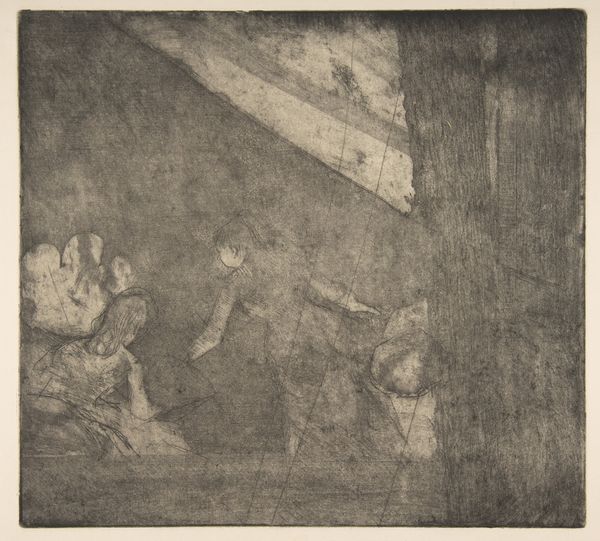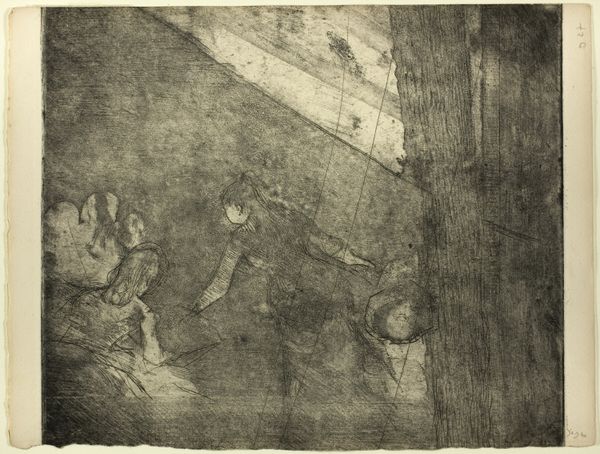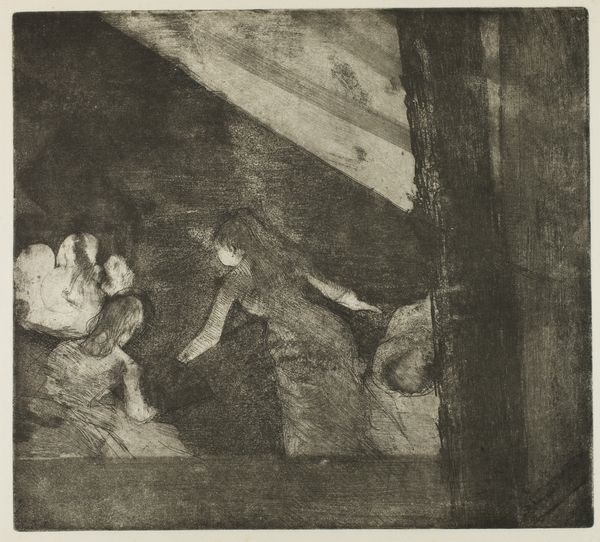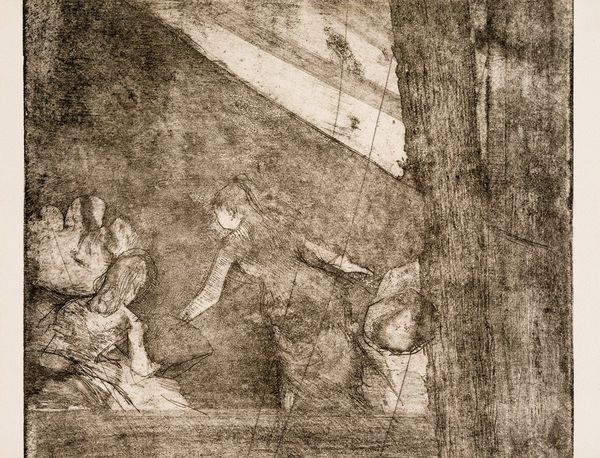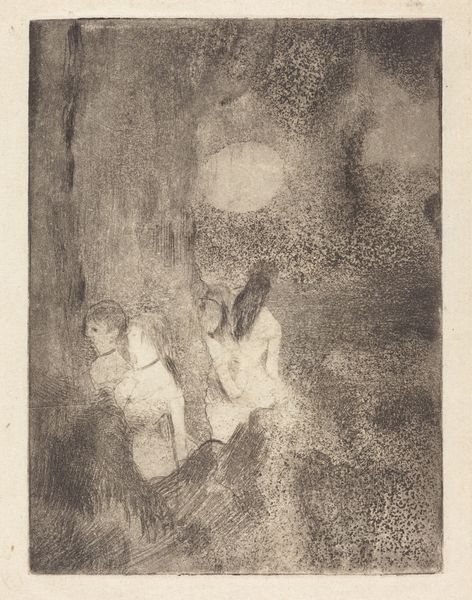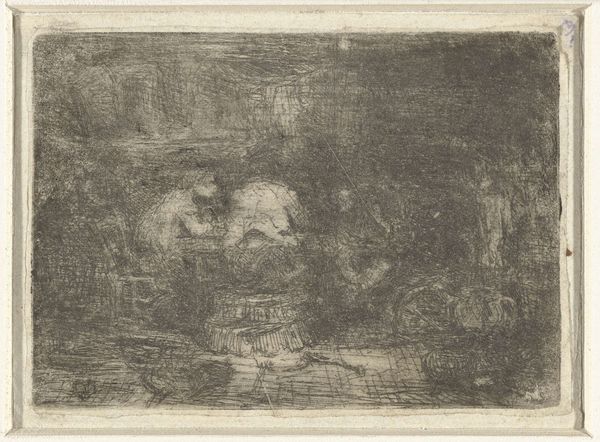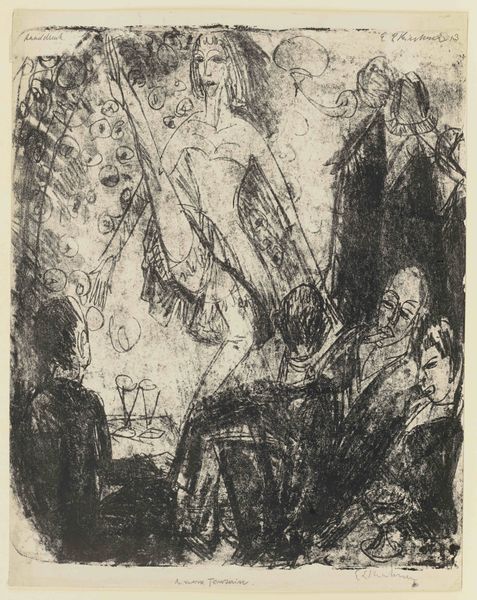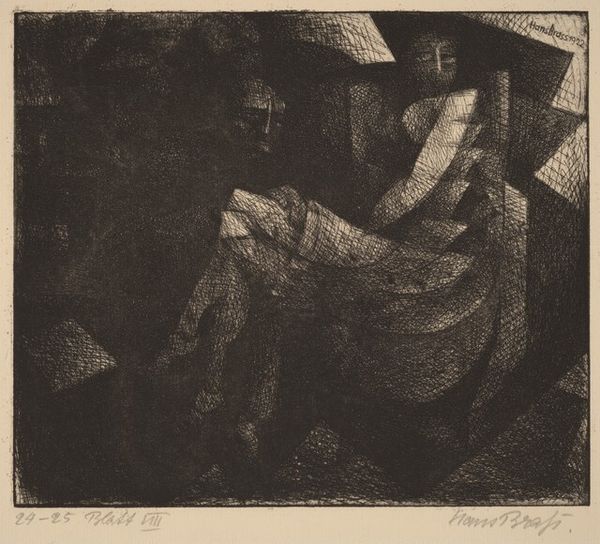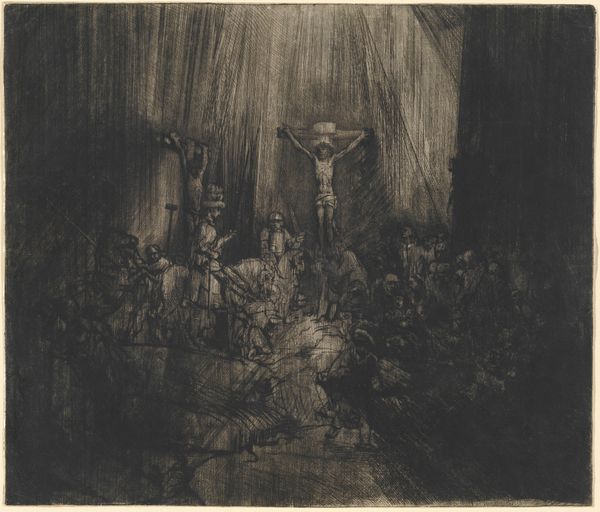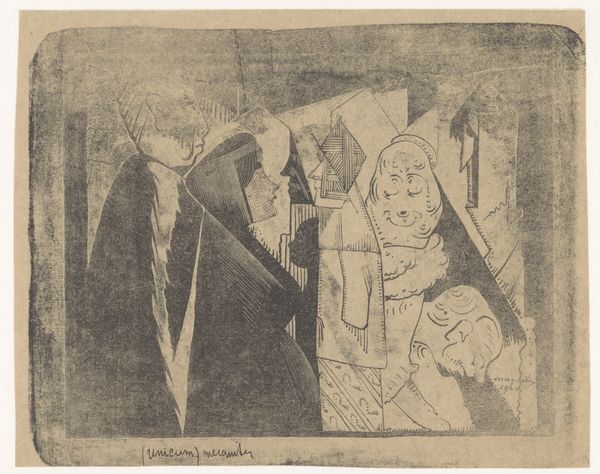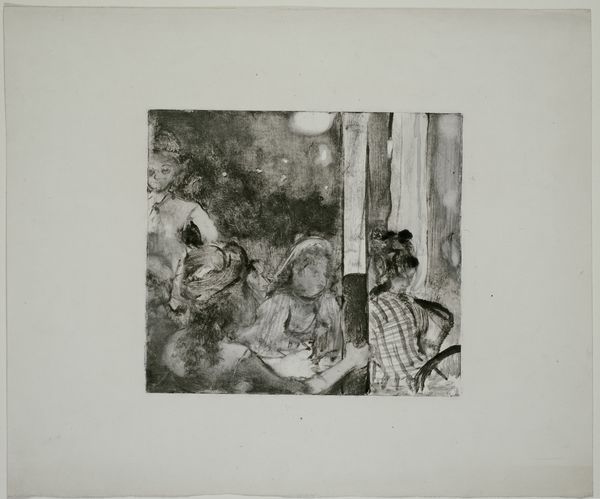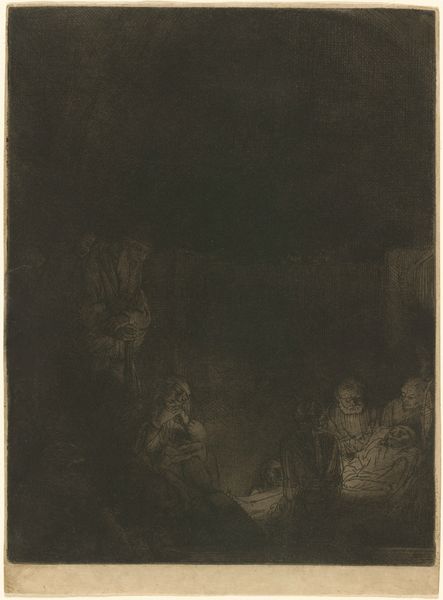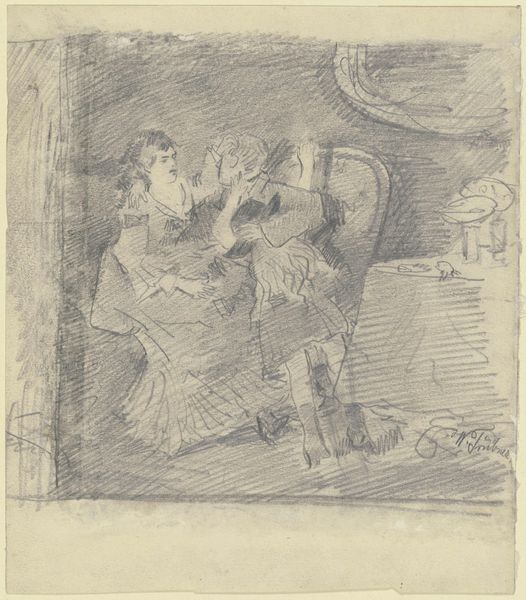
aquatint, drawing, print, etching, pencil
#
portrait
#
aquatint
#
pencil drawn
#
drawing
# print
#
impressionism
#
etching
#
pencil sketch
#
charcoal drawing
#
figuration
#
pencil drawing
#
pencil
Dimensions: 294 mm (height) x 249 mm (width) (bladmaal)
Editor: We're looking at "Aux Ambassadeurs," a print by Edgar Degas, dating from between 1873 and 1876. It looks like he used aquatint and etching. I'm struck by how unfinished it appears; almost like a fleeting moment captured in a dream. What do you see in this piece? Curator: Initially, what arrests me is the bold experimentation in mark-making. Observe the stark contrast in tonal values, achieved through Degas’ masterful manipulation of the etching and aquatint processes. The lines, at times assertive, at others tentative, contribute to the visual rhythm, dictating our gaze. Editor: So, the rough, sketchy quality isn’t a flaw but a deliberate aesthetic choice? Curator: Precisely. Consider the structural elements: the composition defies traditional perspective, favoring instead a fragmented viewpoint. The spatial ambiguities, the obscured faces… all foreground the materiality of the medium itself. Note how the plate tone contributes to the overall atmospheric effect, flattening the image and further emphasizing its constructed nature. Editor: I see it now! It’s not just a depiction of a scene but a study in line, tone, and texture. A sort of… visual game? Curator: A compelling suggestion. The work invites us to consider how meaning is constructed not through mimetic representation, but through the artist's conscious orchestration of formal elements. What assumptions about representation is Degas challenging here, do you think? Editor: I never considered prints could be so layered. Thanks for drawing my attention to how much the technical process influences the final image! Curator: My pleasure. It underscores how intrinsic technique is to the artwork's very essence and its reception.
Comments
No comments
Be the first to comment and join the conversation on the ultimate creative platform.
